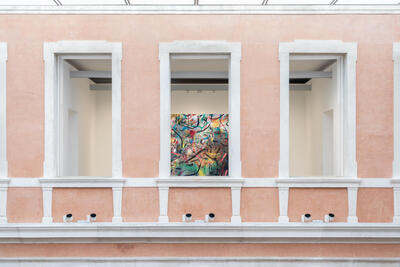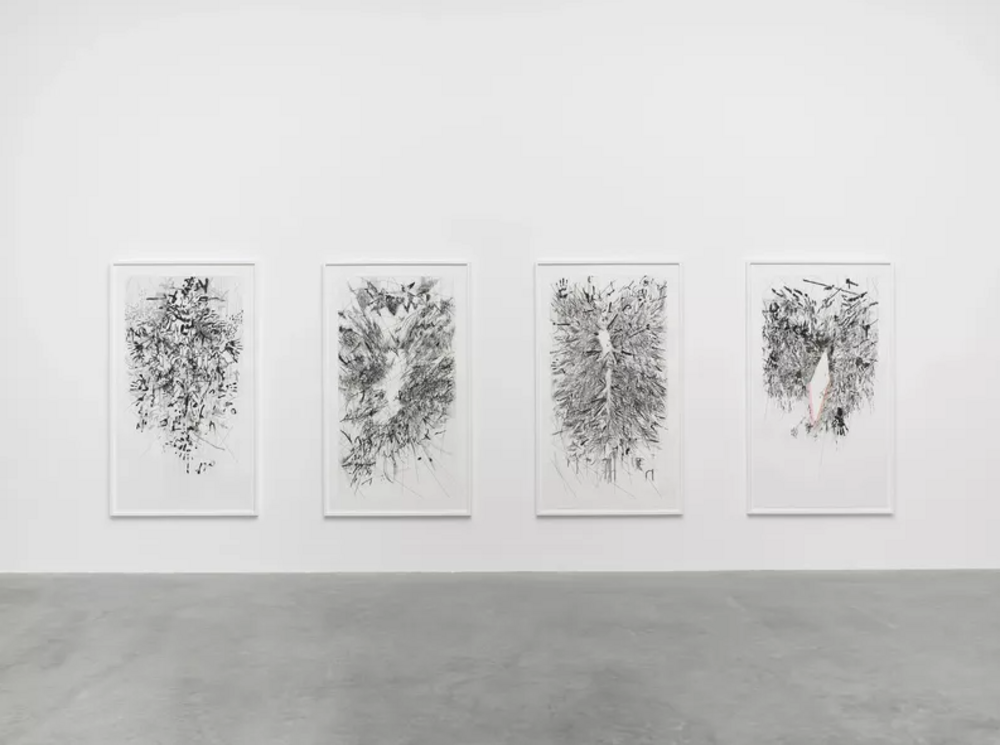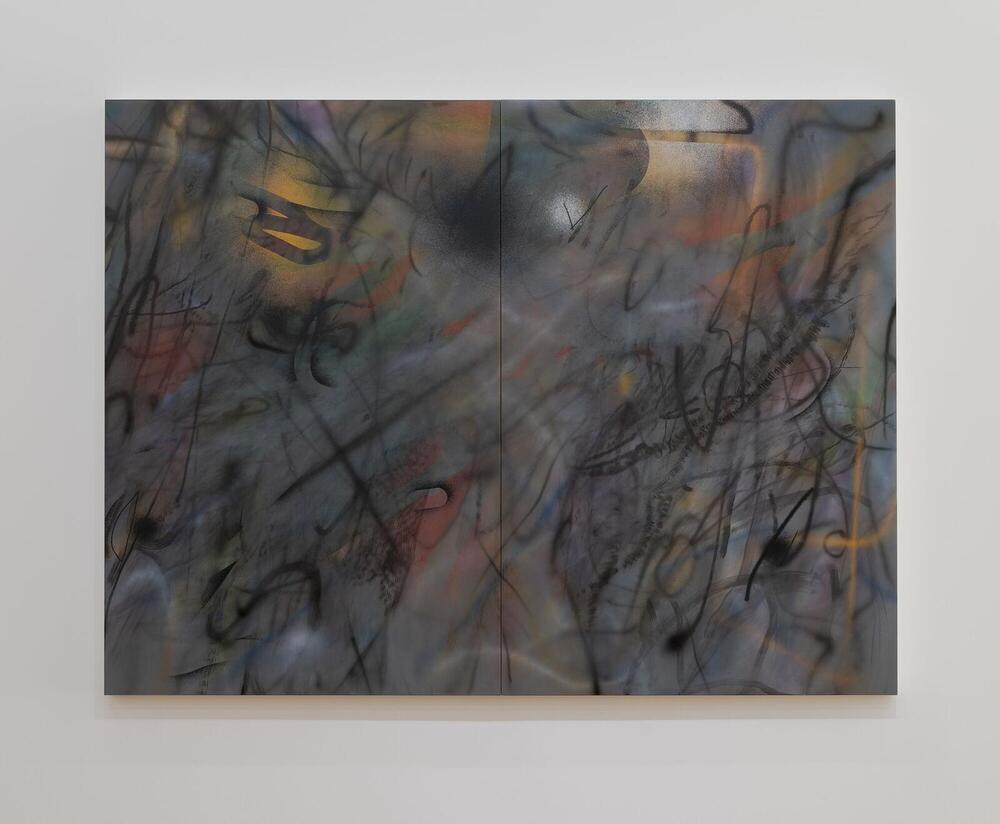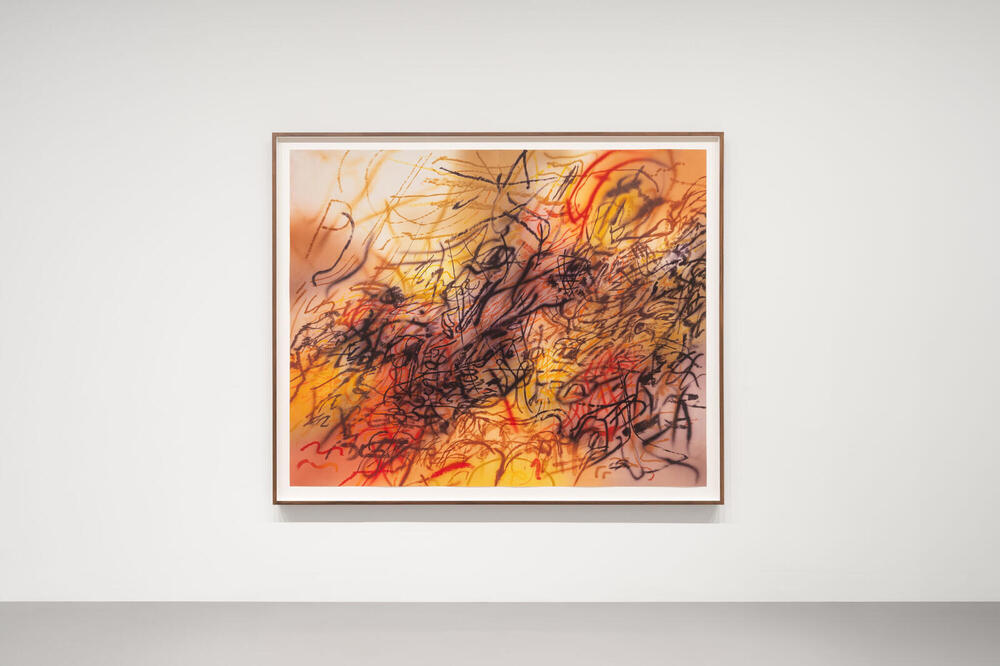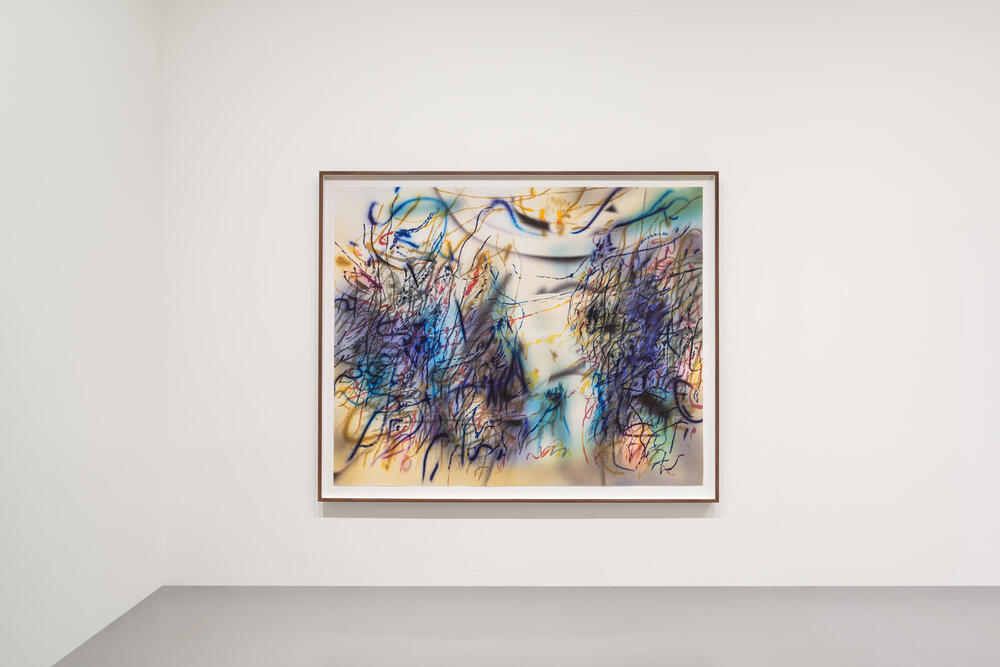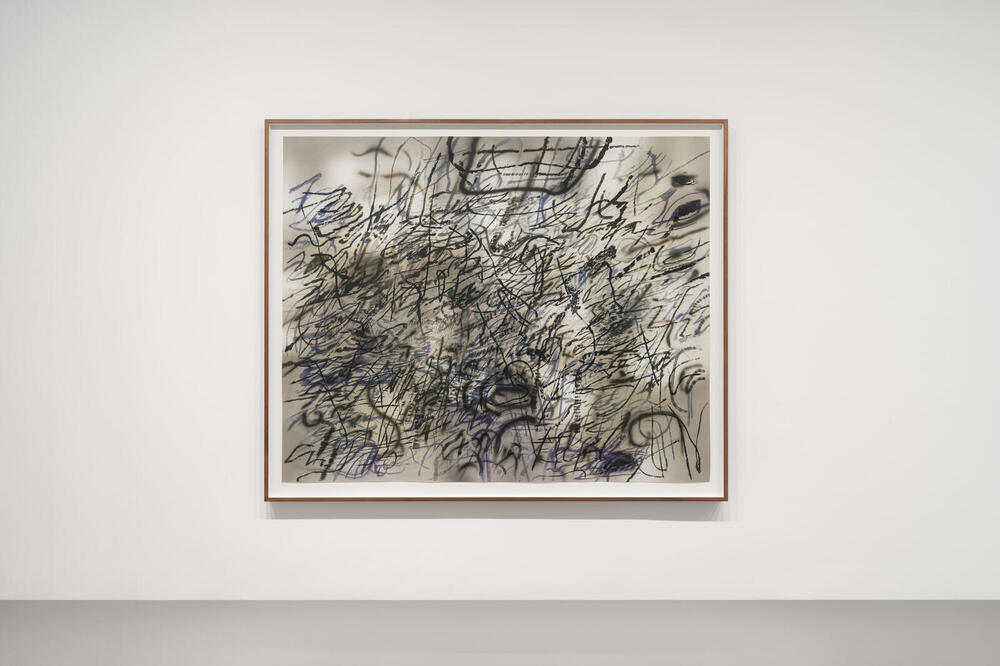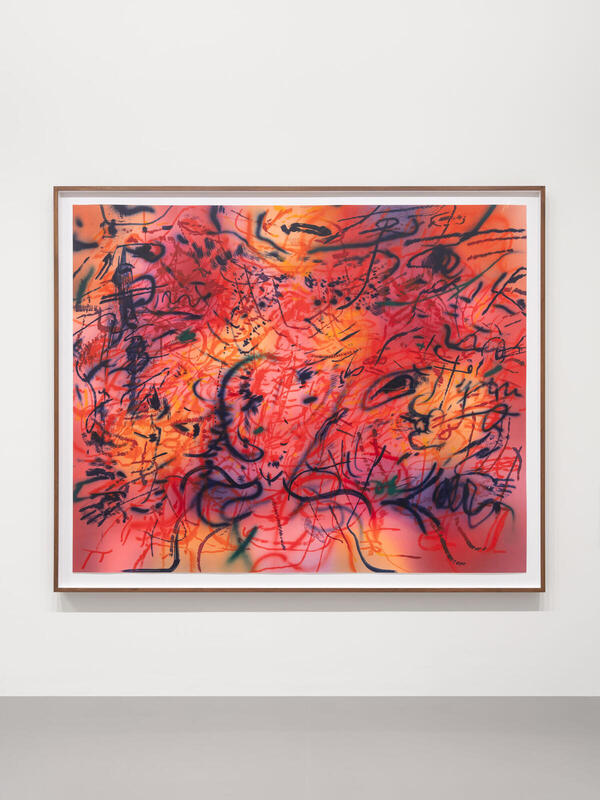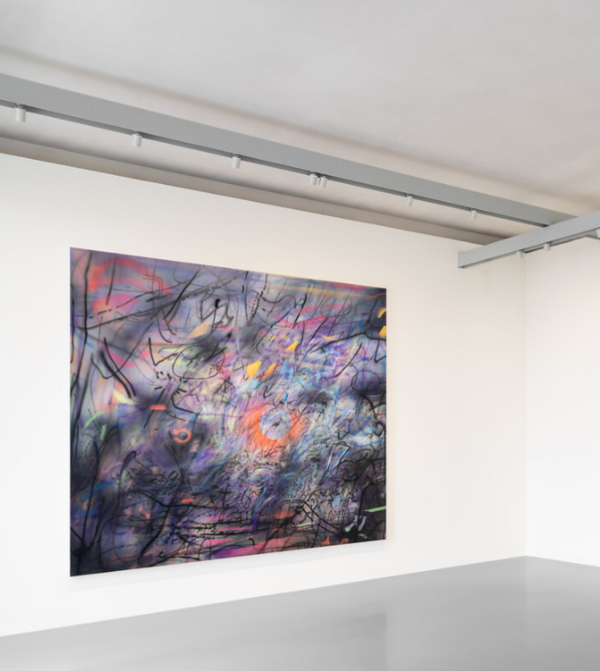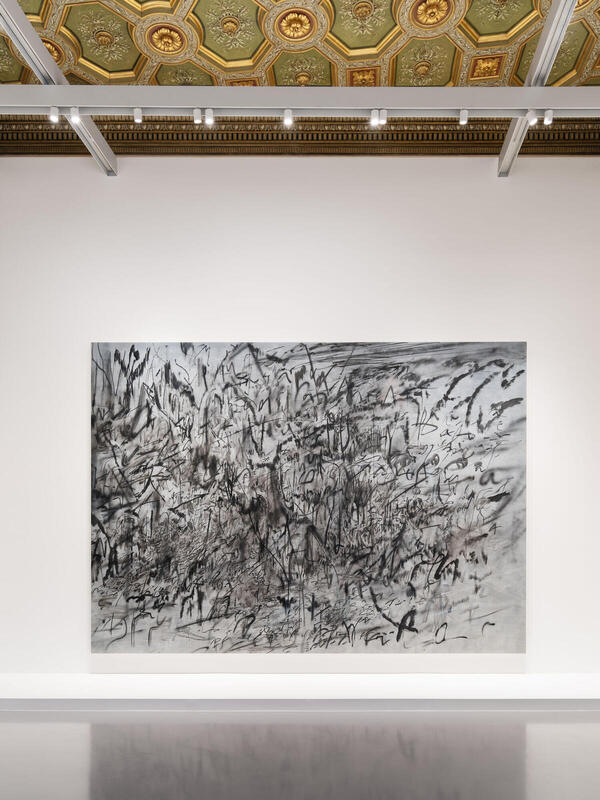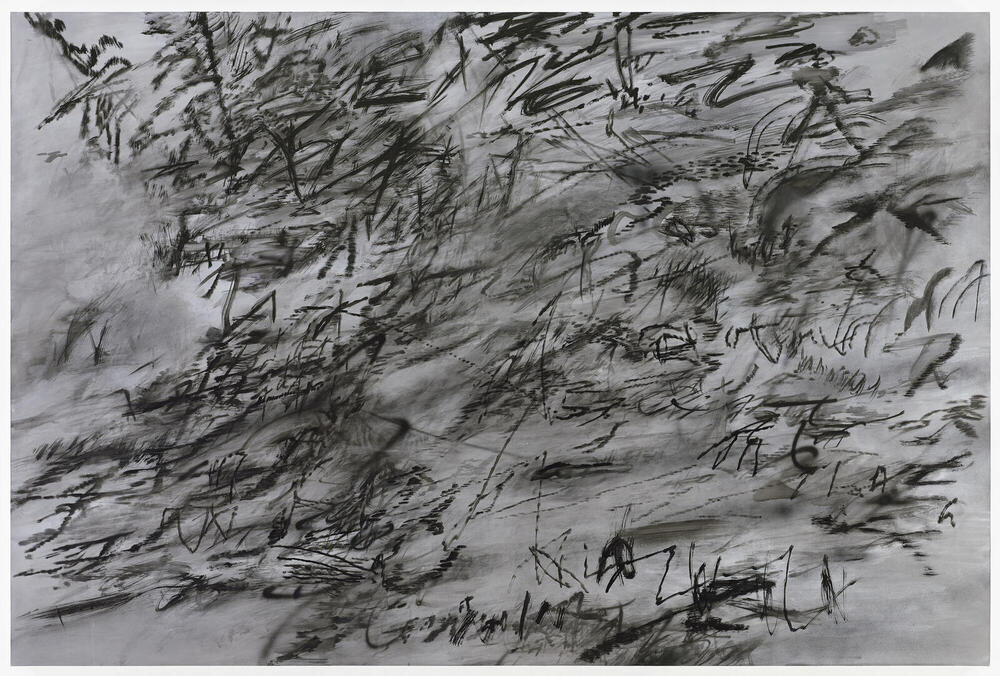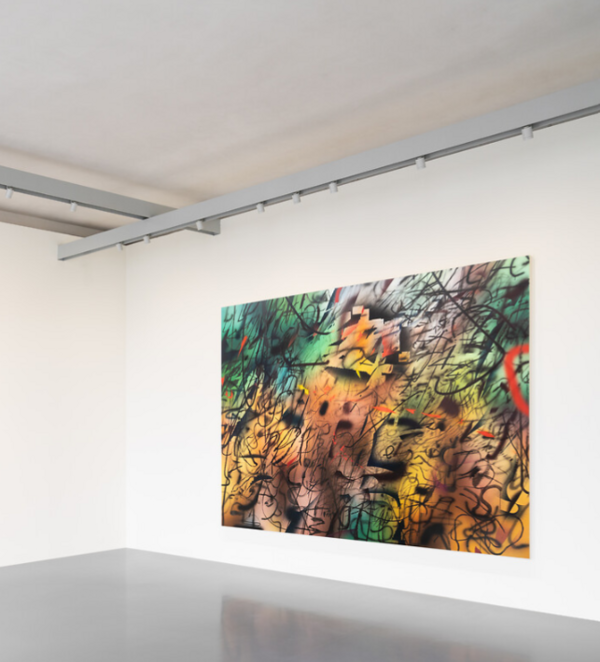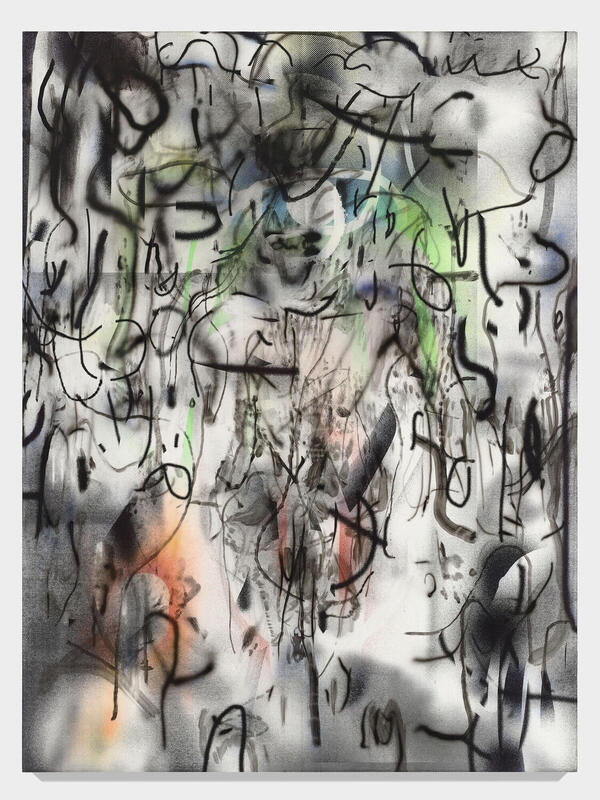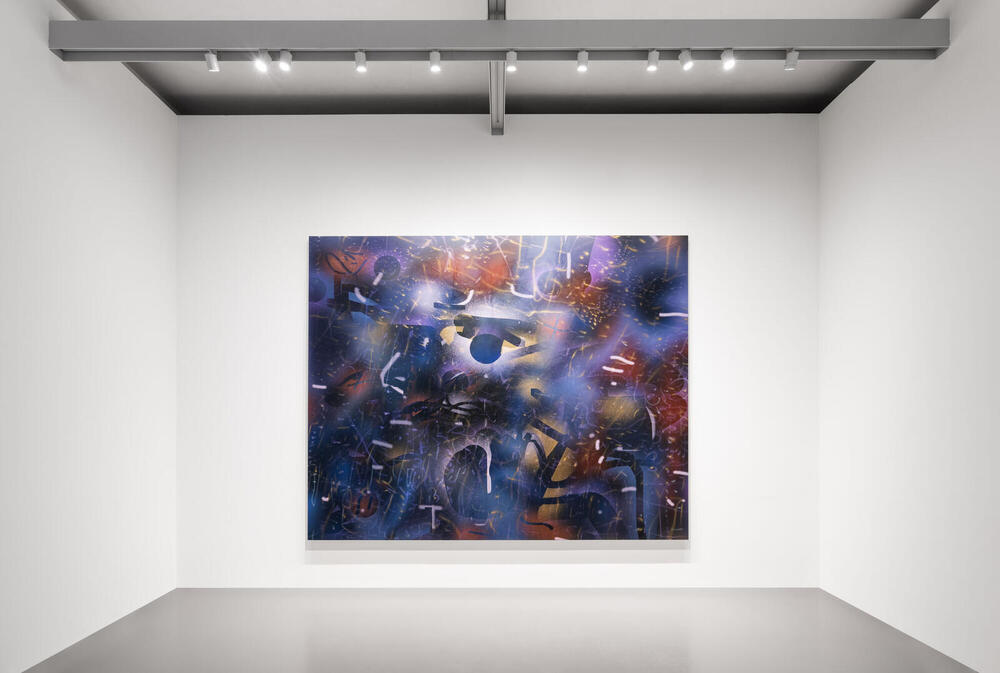Vanescere
Ink and acrylic on canvas
152,6 × 213,5 × 3,4 cm (60 1/16 × 84 1/16 × 1 5/16 in)
This large abstract composition by Ethiopian-American artist Julie Mehretu is a key work in her oeuvre. It marks a pivotal moment in her trajectory when, in 2007, she temporarily abandoned the use of color, and the graphic notations that saturate the surface of the canvas became more expressive and gestural. Mehretu worked on this piece during a residency at the American Academy in Berlin. She incorporated a wide variety of source images and architectural and cartographic diagrams into the design process and the “underlayers” of the work. Here, she drew inspiration from the Buddhas of Bamiyan—three monumental Buddha statues carved into the cliffs of Afghanistan, made tragically famous by their complete destruction at the hands of the Taliban in 2001. The niches into which they were carved remain as the only witnesses to their absence.
In an interview with The New Yorker, the artist reflected on the genesis of this painting: after layering colored forms and elements over a set of diagrams and black-and-white graphic marks, she felt that “the color had destroyed all the black-and-white drawing underneath. So I sanded off a whole section in the middle of the painting, went to the back of my studio to look at it—and the painting was finished! The erasure had become the main action, the void was making all these other things happen.”
This radical gesture of erasure, whose trace remains visible at the center of the canvas, reorganizes the forces and tensions expressed by the work. While it may evoke similar gestures by artists like Robert Rauschenberg (Erased De Kooning Drawing, 1953) or Jean-Michel Basquiat (Defacement, 1983)—the first confronting the drawing of another, the second addressing the defacement of a human face—Mehretu’s act also echoes the iconoclastic violence that targeted the Buddhas of Bamiyan. Vanescere (Latin for “to disappear”) inaugurates a series of large-format works in which Julie Mehretu makes extensive and almost exclusive use of variations in grey, and where her graphic vocabulary is enriched with more incisive gestures, resulting in a physical and spontaneous confrontation with the canvas.
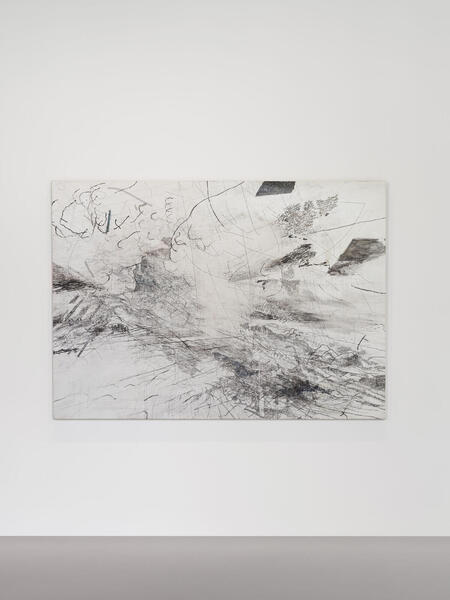
Installation view, “Julie Mehretu. Ensemble”, 2024, Palazzo Grassi, Venezia. Ph. Marco Cappelletti © Palazzo Grassi, Pinault Collection
